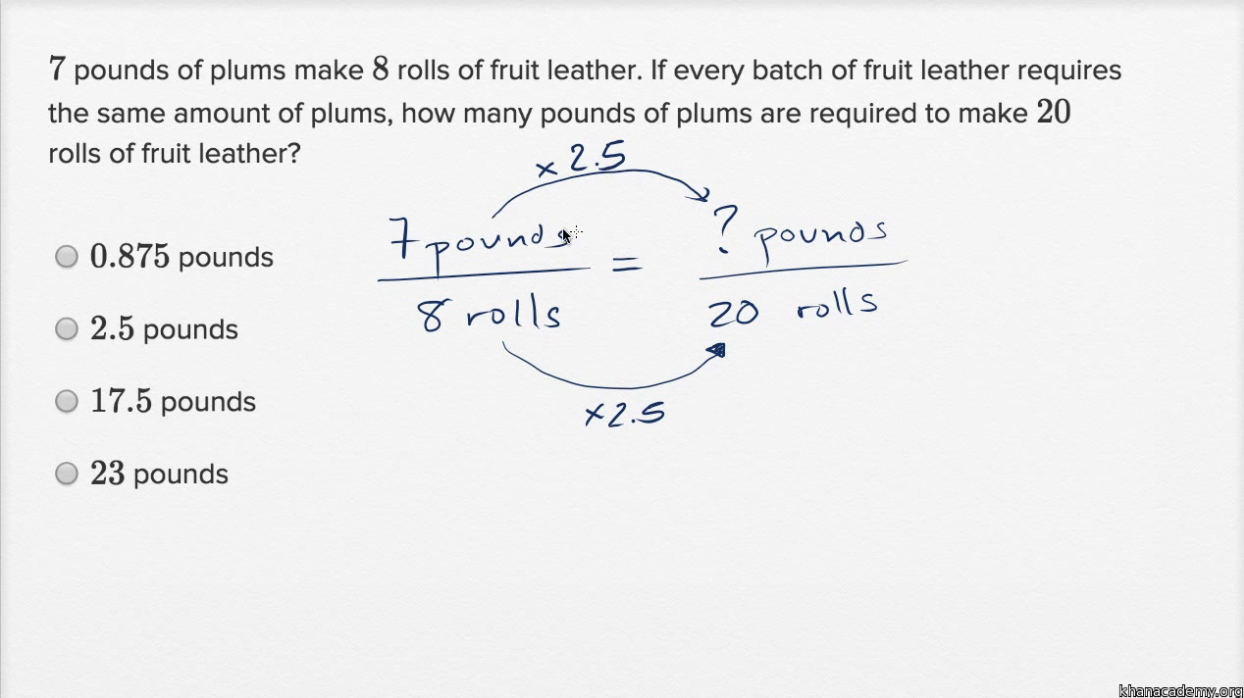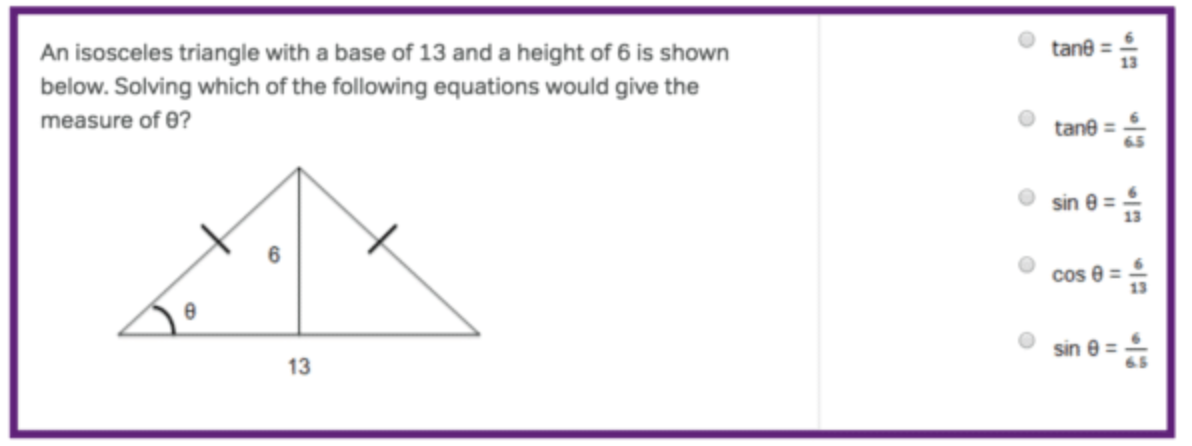SAT Math vs. ACT Math: The Ins and the Outs
What’s in this guide?
Which is easier? Which is faster? Which one am I more likely to score higher in?
This guide will help pilot you in your search for which test to take, but ultimately, it comes down to which math section is right for you?
In this guide, we’re going to break down the similarities and the differences between the SAT Math section and the ACT math section and help you decide which standardized test best suits you.
Organization
Before diving into the specifics, let’s first look at each math section from an aerial view and see how it’s structured.
SAT Math Organization
The SAT has three main sections (four with the SAT essay section) that will always appear in the same order. The test will take three hours (three hours and 50 minutes with the essay), and the math section takes up 80 minutes (about half the test without the essay), excluding break times. Once the math section is over, you won’t be able to go back and answer any missed questions or check back on any questions you were unsure about. Time management is key.
Here’s an overview of the SAT Math section:
| SAT Math Section | Order of Appearance on Test | # of Questions | Total Time | Time per Question |
|---|---|---|---|---|
| No Calculator | 3 (after writing) | 20 | 25 minutes | 75 seconds |
| Calculator | 4 | 38 | 55 minutes | 87 seconds |
Note: The Time per Question part above is only a general guideline on the amount of time you should spend per question. On average, you’ll spend 75 seconds per question on the no calculator section and 87 seconds per question on the calculator section but feel free to allot more time on some questions than others.
The SAT Math section is the only section on the SAT that’s divided into two segments: a No Calculator section (no use of calculator) and a Calculator section (able to use a calculator). In between the two sections, there is a short 5 minute break. The No Calculator section appears first right after the Writing section and is 25 minutes long. The Calculator section appears right after the No Calculator section and is 55 minutes long.
Generally, people who are more confident in their mathematical abilities lean towards the SAT over the ACT since they aren’t as reliant on their calculator. In addition, you get more time per question with the SAT math section than you get with the ACT math section so you get more time to solve the problems and check your answers (we’ll touch on this later in this guide).
ACT Math Organization
The ACT has four main sections (five with the ACT essay section) that, like the SAT, will always appear in the same order. The test will take 2 hours and 55 minutes (three hours and 35 minutes with the essay), excluding break times. Like the SAT, once the math section is over, you won’t be able to go back and answer any missed questions or check back on any questions you were unsure about. Time management is key.
Here’s an overview of the ACT Math section:
| ACT Section | Order of Appearance | # of Questions | Total Time | Time Per Question |
|---|---|---|---|---|
| Math | 2 (after English) | 60 | 60 minutes | 1 minute |
Note: The Time per Question part above is only a general guideline on the amount of time you should spend per question. On average, you’ll spend 1 minute or 60 seconds per question on the ACT math section.
The ACT Math section always appears right after the ACT English section and right before the ACT Reading section (appears second). Generally, people who like to grind things out in one sitting lean towards the ACT over the SAT since the ACT math section is 60 consecutive minutes - no break in between.
Design-wise, everyone has their own preferences so the “better” test design is the one that best works for you. If you can’t do math without a calculator, the ACT is better for you. If you’d like more time per question to solve problems and check your work, the SAT is better for you.
Question Types
Although many of the topics covered in the SAT Math section and ACT Math section are similar, the way they are presented are drastically different. The following section will hopefully provide clarity on what to expect in the math sections when taking the SAT or ACT
SAT Question Types
The SAT math section is fairly straightforward that cover a broad range of topics, specifically focusing on algebra. In general, the SAT math tests fewer concepts/topics than the ACT math, specifically, less than 10% of SAT questions are on geometry and the SAT has fewer trigonometry questions than the ACT. However, the SAT math does have an emphasis on word problems and data analysis. Many parts of the SAT math include several questions off of one scenario.
For example:
The following is an example SAT algebra problem is from Khan Academy.

The SAT will always give you a formula box at the beginning of the Calculator and No Calculator section, but we still suggest memorizing certain formulas in order to maximize time spent on solving the problems and checking your answers. The following image from the College Board shows some important formulas to remember:

One unique thing about the SAT compared to the ACT is that there are 13 grid-in questions which is about 22% of the SAT math section. Unlike the multiple choice, you can’t really guess on these. You have to come up with an answer to the problem.
ACT Question Types
Like the SAT, the ACT math is also fairly straightforward. Generally, they aren’t as wordy as some SAT math questions. However, as noted earlier, there is a heavier emphasis on gemoetry (35-40% of questions on ACT Math) and trigonometry on the ACT math than the SAT math. Also, the ACT math covers a wider range of topics than the SAT math like trigonometry, matrices, and logarithms.
For example:
The following is an example ACT trigonometry problem is from Magoosh.

Unlike the SAT, you will not be given a formula box so you have to memorize all the necessary formulas before the test day.
The trade-off between the SAT and ACT is that the ACT covers a wider range of topics but covers each topic less extensively than the SAT. Topically, if you’re strong in geometry or trigonometry, the ACT might be better suited for you. If you can’t remember formulas and need to rely on given formulas, the SAT might be better suited for you.
Scoring
Imagine this. It’s the fourth quarter. It’s a tied game, and there’s one second left on the clock. Your coach calls a play, and the ball gets inbounded to you. What do you do? You chuck it up. Really. What’s there to lose? You miss, and you might get chirped a little bit, but if you hit, you’ll be the hero.
This analogy may seem weird, but it is an applicable testing strategy to maximize your score in both the SAT and the ACT. Both the SAT and the ACT combine the correct and incorrect answers to give you a raw score which is then converted into a scaled score. This section in this guide will break down the scoring processes of both the SAT and the ACT.
SAT Scoring
As explained earlier, the SAT Math section is broken down into multiple-choice questions and grid-in questions. For each question, you will receive the following on your raw score: - +1 for each correct answer - +0 for each incorrect answer
Note: there is no penalty for incorrect or blank answers on the SAT. That’s why on the multiple-choice questions, when the shot clock is running down and you’re unsure about a question, you should just chuck it up and guess one of the answers. Hitting on one of these guesses won’t make you a hero but at least you’ll get a higher SAT score!
The total raw score on the SAT Math section converts to a scaled score between 200-800. With the scaled scores, you don’t have to get every question right in order to achieve a perfect score on the math section. They’re scaled. The scaled score will then give you your percentile ranking which is basically how you stack-up compared to the rest of the people that took the SAT.
For example, if you scored in the 50th percentile, you’re dead on average: you scored better than 50% of all people who took the SAT and 50% scored higher than you.
Fun fact: For each multiple choice question guess, you’re getting 0.25 points added to your raw score (the points are not actually added to your raw score) so for every 4 multiple choice questions that you guess, on average, you’re getting 1 point added to your raw score!
Note: A good test taking strategy is to cross out answers you know are incorrect. If you cross out an incorrect answer, those guesses discussed above result in even more “points” added to your raw score!
ACT Scoring
Every question on the ACT Math section is multiple-choice with five different answer choices. For each question on the ACT, you will earn the following on your raw score:
- +1 raw point for each correct answer
- +0 raw point for each incorrect answer
Note: Like the SAT, there is no penalty for incorrect or blank answers on the ACT so the same guessing strategy for questions you’re unsure of as mentioned earlier applies here too. However, since the ACT has 5 answer choices rather than 4, the guessing strategy is less effective.
The total raw score on the ACT converts to a scaled score out of 36. Like the SAT, you don’t have to get every question right in order to achieve a perfect score. The score is scaled. The scaled score will then give you your percentile ranking which is how you stack-up against everyone else that took the ACT.
SAT Scores and Percentiles vs. ACT Scores and Percentiles
As discussed earlier, since the scores are scaled, you don’t have to get every answer correct in order to achieve a perfect score. Like-wise, the perecentile you place in isn’t the exact percentage of questions answer correctly. The following information shows the amount and percentage of questions you must answer correctly on the SAT and ACT math sections to score in certain percentiles. All the data below comes from current SAT and ACT percentiles and official SAT and ACT practice tests. SAT:
| SAT Raw Score | SAT Scaled Score | SAT % Questions Correct | SAT Percentiles |
|---|---|---|---|
| 20 | 450 | 34% | 25th percentile |
| 28 | 520 | 48% | 50th percentile |
| 39 | 600 | 67% | 75th percentile |
| 52 | 730 | 90% | 95th percentile |
ACT:
| ACT Raw Score | ACT Scaled Score | ACT % Questions Correct | ACT Percentiles | | ———- | ———- | ———- | ———- | | 16-18 | 16 | 27-30% | 25th percentile | | 25-26 | 19 | 42-43% | 50th percentile | | 34-36 | 24 | 57-60% | 75th percentile | | 49-50 | 30 | 82-83% | 95th percentile | Note: Since every SAT/ACT test is unique, these are only general guidelines for the raw score and % questions answered correctly needed to get a certain scaled score and certain percentile. Basically, this means there might be a small range in either positive or negative direction needed to achieve a certain scaled score and percentile.
As shown in the data above, you need to answer more questions right on the SAT to achieve a certain percentile than the ACT. In general, you would need to answer 2-3 more questions correctly on the SAT to achieve the same percentile on the ACT.
Summary
The SAT Math:
- Divided into two parts: No Calculator and Calculator
- No Calculator appears third, after Writing and language, Calculator appears fourth, after No Calculator
- No Calculator: 75 seconds per question, Calculator: 87 seconds per question
- Wrong answers aren’t penalized (guess!)
- Consists of multiple-choice questions (4 answer choices) and grid-in questions (give your own answer)
- Formula box provided in the beginning of both No Calculator and Calculator section
- Heavy emphasis on algebra, less so on geometry and trigonometry
- More emphasis on word problems and data analysis than the ACT
The ACT Math:
- Appears second, right after the English section
- 60 questions, 60 minutes (1 minute per question)
- Calculator allowed through the whole section
- Only multiple-choice, each multiple-choice having 5 answer choices
- Wrong answers aren’t penalized (guess!)
- No formulas provided
- Larger emphasis on geometry (35-40% of questions)and trigonometry
- Wider range of topics covered than the SAT, but each topic covered less extensively
So Which One Should I Take?
Ultimately, the test you should take comes down to which test suits your strengths. Each test has its own pros and cons for each specific person. If unsure, we recommend taking at least one practice SAT and ACT practice test and comparing your scores. I know. What was the point of reading this guide then? At the end of the day planning can only get you so far, and the results from your practice is the only thing that can give you definitive results. If one score is drastically higher than the other, there you go.
However, that’s not to say that just because you score higher in one math section than the other, that’s your test. What matters is total score so even if you score lower on the SAT math than the ACT math, as long as your SAT overall score is higher, then the SAT is the better option for you.
Standardized testing is all about balance, from balancing your time while taking the test to answer the most amount of questions correctly to finding which test holistically best suits you. Just because you’re strong on one area, doesn’t mean you’ll crush the SAT/ACT.
And even if you don’t achieve the scores you desire, just note that only practice, diligence, and preparation will help you crush the SAT/ACT and achieve your testing potential. For more in-depth teaching about the SAT/ACT, check out our website Prepmedians to learn more about everything you need to know!
